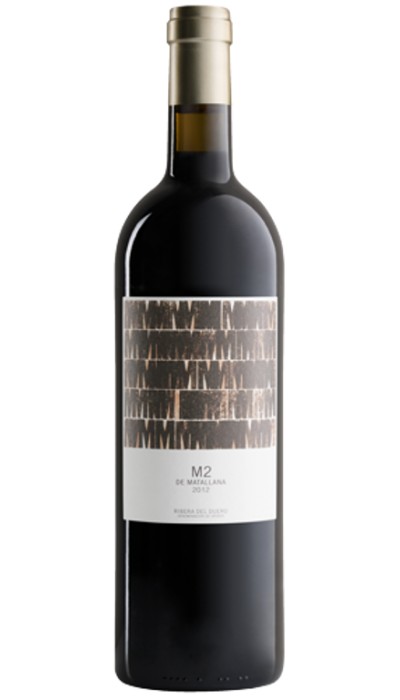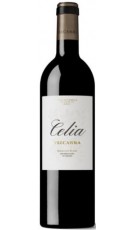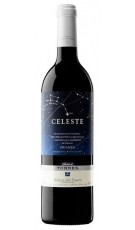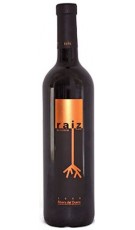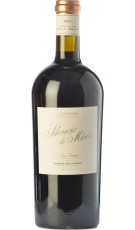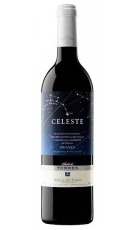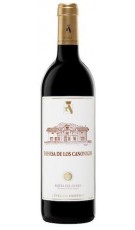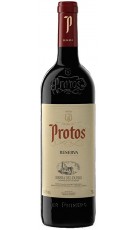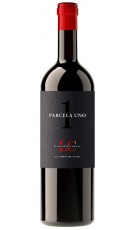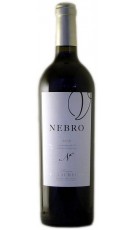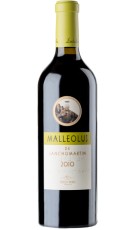M2 de Matallana 2013
Red Wine Crianza, 14 months in french oak barrels
Prices VAT included
| Recommendations: | Temperature: 16 - 18º C |
| Food Pairing: | Ideal for sharing red meats. |
| Kind of wine: | Red Wine Crianza |
| Grape Varieties: | 100% Tempranillo |
| Vintage: | 2013 |
| Ageing: | 14 months in french oak barrels. |
| Alcohol: | 14,5% vol |
| Formats: | 0,75L |
| Soils: | These are very old and very stony soils, developed in terraces of the tertiary era from red marls, conglomerates and continental sandstones. |
| Peñín Guide: | 91 |
COMPAÑÍA DE VINOS TELMO RODRÍGUEZ

Telmo Rodríguez
Since 1994 with its first Alma wine from old vineyards of Garnacha from the town of Sada, in a mysterious Navarra. A trajectory through different viticultural areas of our country where they have left their mark to produce great wines.
Bodega Lanzaga
In 1998 they returned to La Rioja full of experience and enthusiasm. They wanted to rediscover the taste of Rioja, which for them could only be linked to the best places, of the different towns that had a long viticultural tradition.
Bodega Lanzaga has 15 hectares, an old model with a human dimension.
Village wines with authentic Rioja value. One of our biggest obsessions in Rioja was to look for the plots, the exceptional vineyards, endowed with the talent necessary to become a great wine. The Beatas, Tabuérniga, El Velado, La Estrada are the result of this search.
Ladeiras do Sil
This mysterious Galicia, mixture of Atlantic and continental climate, of Castaño and Jara, keeps in its entrails an exceptional wine.
The authentic origin of viticulture in this area is a mystery. They like to talk about the Romans of the gold mines or the great concentration of important convents and their influence on the development of Galician viticulture. The truth is that the real protagonist is the man who moved tons of stones to give rise to an exciting vineyard landscape.
In 2002 he began his work, taking the witness directly from the families of grape growers who had been pruning generations and digging impossible vineyards to make their daily wine.
Phylloxera distorted the profile of the original vineyard. Some parcel abandoned some century ago has given them the opportunity to plant old vines. Co-plantation takes on its true meaning in this territory. Varieties such as Merenzao, Sousón, Treixadura, Godello Tinto, Brencellao, Doña Blanca, Palomino ... are its wicks.
The Falcoeira, As Caborcas and O Diviso Parcels have taught them to understand the complexity of the area.
23 hectares of difficult vineyard are your commitment to this magical place.
Molino Real
The great wines of before were mostly sweet. Tokaji, Sauternes, Vin Santos, Madeiras, Late Harvest Rieslings, Vins de Paille, all linked to the great viticultural areas of the old world. In Spain too, the tostadillos, raisin wines and suppurates had their great moment and disappeared. In the mid-90s, we decided to rescue what had been without a doubt the most important of all: the "Mountain Wine" of Malaga.
Difficult, almost impossible vineyards that had miraculously survived thanks to the handicrafts of the raisin. The men continued to harvest in ravines, tirelessly traversing the slopes of the Montes de Málaga. The women took care of the paseros, pampering the Moscatel grapes until turning them into "the best raisins in the world".
Pegaso Viñas ViejasCebreros is a passing village. It is a point that separates the north from the south. The imperial road and the royal canyon cross it. It was a glassmaking center and later, during the 19th century, viticulture took on great importance.
They were attracted by the impressive grenache vines, their pruning and their soil. This extraordinary vineyard adrift knew neither winemaker nor engineer nor winemaker; I was an orphan.
In 1999 his adventure began.
First they recovered the slope of Arrebatacapas, the most important expression of Slate of all Gredos. They re-cultivated their vineyards and Pegaso Barrancos de Pizarra was born. A little later, they found other corners with equally interesting granite soils.
Gago Viticultores de Toro
They were part of the movement that rediscovered the bull vineyard at the end of the 90s.
Several wineries from different areas decided to work this land differently, which had the merit of preserving a lot of old vineyards in the most interesting terms of the region.
A personal commitment was to have families of wine growers in the area. Work with them and support them to be able to return to a quality viticulture.
Satisfied with their project Gago Viticultores de Toro, a tribute to those who for generations maintained and protected their vineyards.
Matallana
The strength of the tinto fino led them to the páramo of La Ribera. They wanted to understand, in their own way, this land. Instead of following the course of the river, they traversed from north to south, from Sotillo de la Ribera to Pardilla.
Its enormous diversity of soils and different landscapes. They decided to plant mostly vineyards, vineyards in glass, grafting the Fine Ink in its different clones.
20 hectares of exceptional vineyard. They have produced almost 20 vintages and now they begin to know what they want and what they can contribute to this area.
Featured products

(+34) 91 129 11 11
(+34) 638 458 218
- Brandy
- Cognac
- Gin Premium
- Ron
- Whisky
- Denomination of Origin
- Winery


















